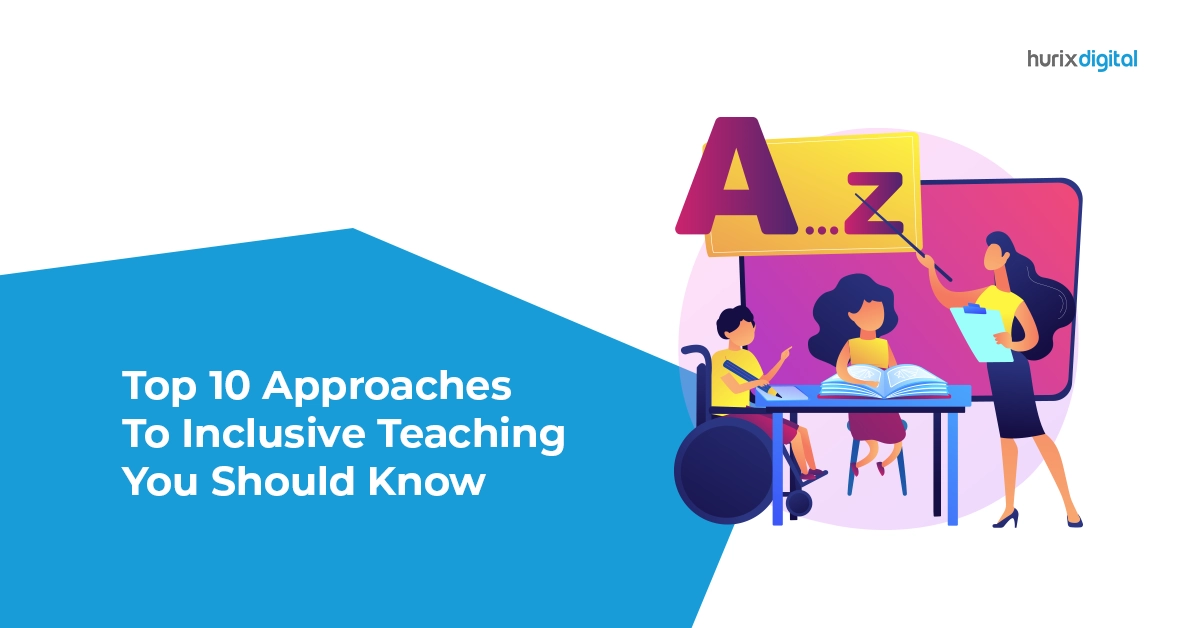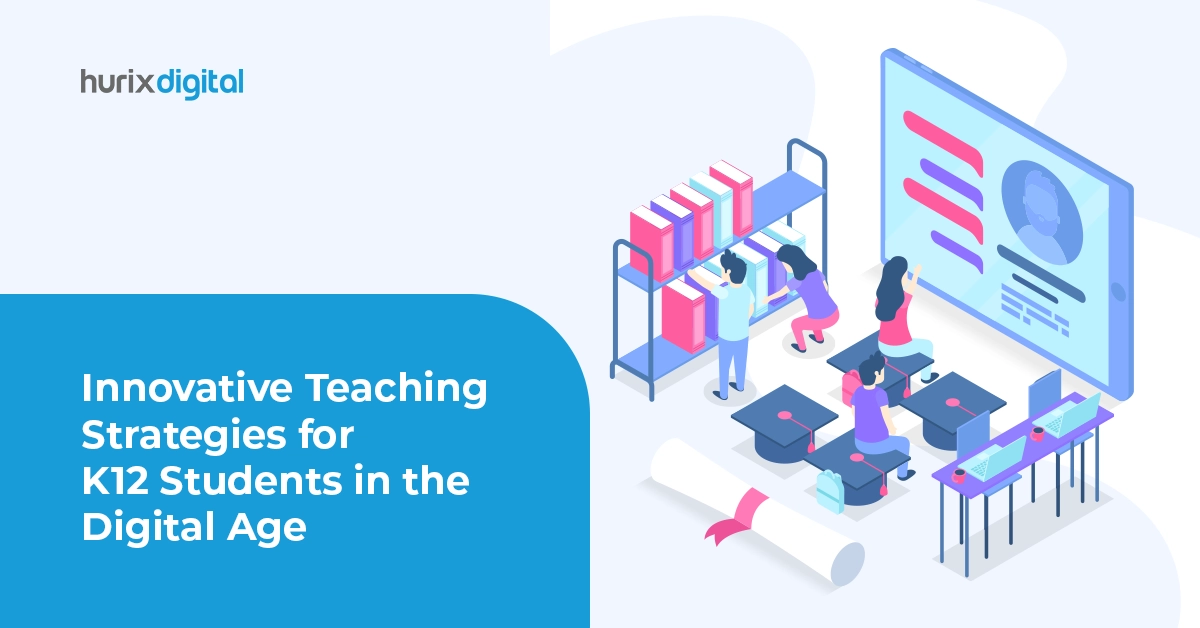
Top 10 Inclusive Teaching Best Practices That Are Effective
Lack of inclusion in education leaves learners with disabilities and learning challenges, as well as economic, language, and location barriers outside the formal system.
People with disabilities alone constitute 1.3 billion, i.e., 16% of the world’s population. Hence, a significant number of learners remain underserved due to various barriers.
However, today, the education policies of various countries are becoming more inclusive. The aim behind this shift is to make education an inclusive experience and treat it as a human right. This means that learning must be relevant and accessible to all learners.
A key strategy in this journey is to make inclusive teaching a pillar of education at all levels. This blog deconstructs inclusive teaching, its relevance, and key strategies that can help educators and education providers bring it to fruition.
Table Of Contents:
- What Is Inclusive Teaching?
- Top 10 Inclusive Teaching Strategies
- Get Familiar with Learning Challenges
- Build a Supportive Environment
- Use a Blended Learning Model
- Align Teaching Strategies to Address Barriers
- Leverage the Right Technology
- Build and Share Accessible On-Demand Resources
- The shift from Physical Textbooks to eBooks
- Use Multi-Sensory Teaching Tools
- Build a Collaborative Learning Process
- Encourage Engaged Learning
- Conclusion
What Is Inclusive Teaching?
Today, diversity and inclusion in education is a goal of many educators, education providers, and institutes. The aim is to offer all learners equal opportunity to learn effectively.
Inclusive teaching is a teaching and facilitation approach where educators ensure that all learners, irrespective of their learning barriers, can access and participate in learning activities.
Like any system, it takes a collective effort to deliver an inclusive approach to teaching. The entire responsibility cannot be placed on the shoulders of the teachers alone. Inclusive teaching must be standardized and developed as a best practice.
Top 10 Inclusive Teaching Strategies
Let’s delve into important strategies for the effective implementation of inclusive education.
1. Get Familiar with Learning Challenges
The first step towards building diversity, equity, and inclusion (DEI) in schools and other levels of education is for educators to understand the barriers raised by disability, location, language, and learning challenges before providing solutions.
For instance, learners within the disability spectrum struggle based on their specific disability. A wheelchair user will be unable to physically travel to the school unless the physical infrastructure of the school is accessible to their needs.
Organizations must invest in building training programs that empower educators with the knowledge and skills to deliver inclusive training.
2. Build a Supportive Environment
Inclusive teaching cannot thrive in isolation. It requires a supportive environment – a culmination of infrastructure, tools, resources, and practices – which forms a foundation within which inclusive teaching can be delivered.
For instance, an inclusive environment in a school may include accessible physical infrastructure, trained educators with inclusive teaching skills, and accessible learning resources for students.
On the other hand, a virtual school does not require access to accessible physical infrastructure but a digital framework that supports inclusive teaching. Inclusive environments need to be tailored to the learner context, profile of learners, and education outcomes.
3. Use a Blended Learning Model
There is a growing adoption of a blended learning approach to engage diverse sets of learners, an important pillar of inclusive teaching. This is a combination of classroom lectures combined with other methods, such as access to on-demand online learning resources and collaborative learning through projects.
Blended learning helps build access, as well as connections between diverse learners. Hence, educators need to shift out of the mindset of classroom lectures and be open to using diverse tools for enhancing learning.
4. Align Teaching Strategies to Address Barriers
Once the learning barriers are identified, the next step is for an organization to put in place teaching strategies that cater to the needs of diverse profiles of learners.
For instance, learners with hearing challenges will need access to video learning resources with captions or sign language interpreters. In the case of live lectures, access to closed captioning in video conferences can close the gap.
Also Read: A Deep-Dive Into the Inclusive Education Approaches in the USA
5. Leverage the Right Technology
Any educational ecosystem must have access to the right technology to help foster an inclusive approach to teaching. Educational platforms and institutes can benefit from the use of cloud-based automated learning management systems.
This solution helps admins create, publish, and distribute high-quality learning resources, make the entire learning operation very efficient, and leverage data to track students’ learning progress.
The last step is especially important in the case of underserved audiences, as educators can offer additional resources to make learning effective.
6. Build and Share Accessible On-Demand Resources
Educators must be in a position to share high-quality, interactive, and engaging on-demand learning resources with their students. Such resources must be thoughtfully and strategically designed to be accessible to all.
Education publishers must follow the universal design principle and ensure that the same piece of content can be relevant to every learner, no matter what the learning challenge.
7. Shift from Physical Textbooks to eBooks
Today, educators and education providers are adopting interactive eBooks. Interactivity builds engagement and unlocks the doors of access for diverse learners.
The size of the text can be adjusted, and the learners and teachers can highlight text and leave comments. Learners can engage with videos, audio representations, and interactive quizzes. eBooks can power diversity and inclusion in higher education.
8. Use Multi-Sensory Teaching Tools
Today, educators are leveraging multi-sensory tools that engage all senses, from listening to physical touch.
This approach enables learners to use their preferred ability to enhance their learning journeys and absorb knowledge and skills. This approach is disrupting the one-size-fits-all mode of education.
9. Build a Collaborative Learning Process
Nurturing a collaborative learning process is a great way to drive DEI in higher education. Group projects, for instance, can nurture social integration in underserved learners as much as the absorption of knowledge.
They nudge learners to engage with each other and build team skills, which are in high demand in the workplace.
10. Encourage Engaged Learning
Educators are disrupting the lecture-style classroom by breaking down learning into smaller segments. Hence, lectures can be interjected with quizzes, which can be made accessible by using interactive voting software.
However, these activities must be accessible to all learners to be equally effective. This is where technology comes into play. For instance, the use of interactive voting software can help all learners participate in a quiz.
Also Read: How to Infuse Diversity and Inclusivity into Your Curriculum Design
In Conclusion
Today, inclusive teaching is growing as a best practice across all levels of education. Educational institutes and providers can partner with a technology specialist to power teaching methods that drive diversity and inclusion in schools, higher education, and professional programs.
Suppose your education platform or institute aims to cultivate inclusivity in teaching methodologies. Then don’t worry! Hurix Digital is geared to support you in meeting your requirements with state-of-the-art technology solutions.
Get in touch with us to start a conversation and leverage the best Learning Management Solutions for your small business.









